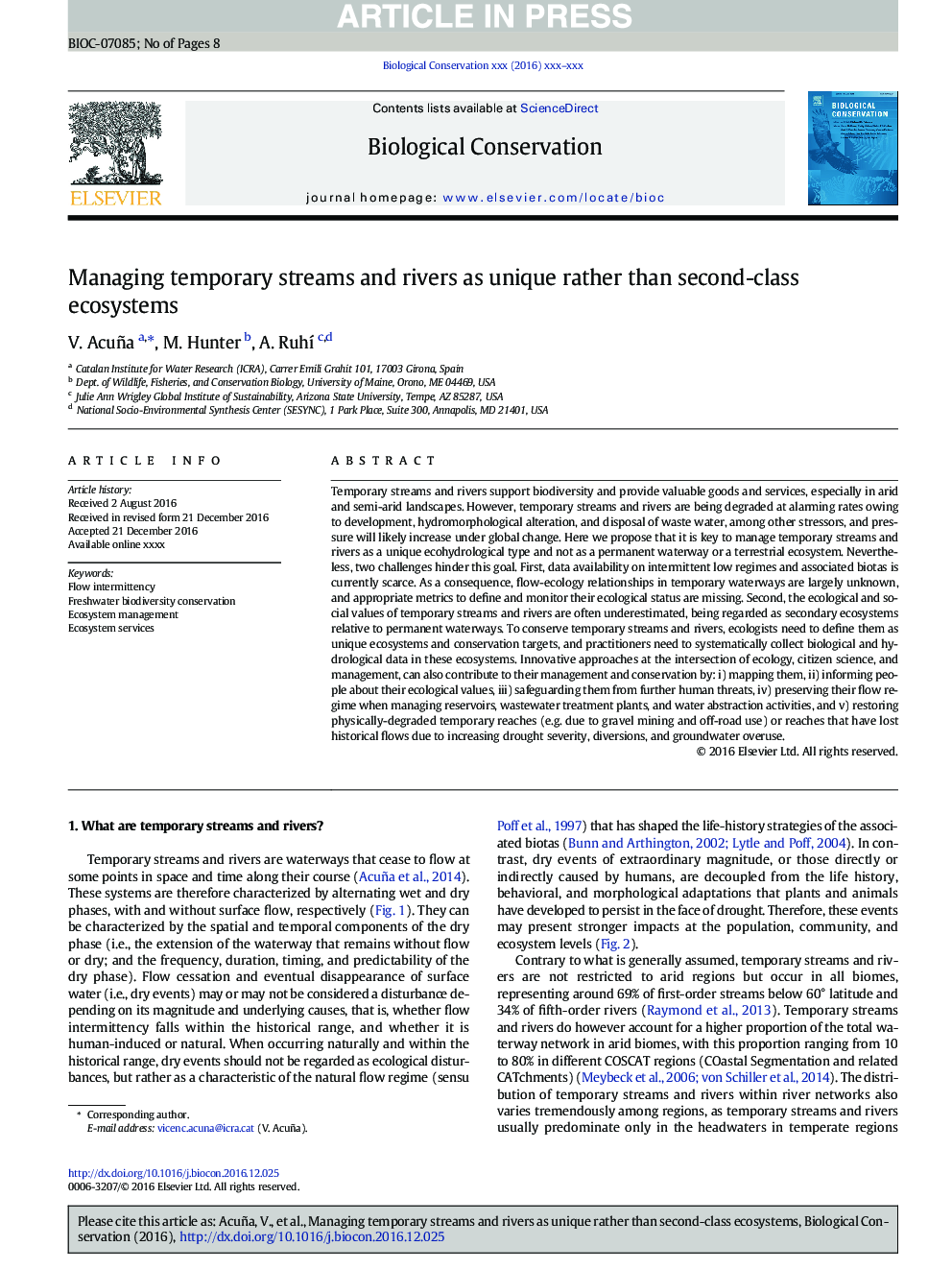| کد مقاله | کد نشریه | سال انتشار | مقاله انگلیسی | نسخه تمام متن |
|---|---|---|---|---|
| 5742912 | 1412290 | 2017 | 8 صفحه PDF | دانلود رایگان |
عنوان انگلیسی مقاله ISI
Managing temporary streams and rivers as unique rather than second-class ecosystems
ترجمه فارسی عنوان
مدیریت جریان های موقت و رودخانه ها به عنوان اکوسیستم های منحصر به فرد و نه درجه دوم
دانلود مقاله + سفارش ترجمه
دانلود مقاله ISI انگلیسی
رایگان برای ایرانیان
کلمات کلیدی
جریان متناوب، حفاظت از تنوع زیستی آب شیرین، مدیریت اکوسیستم، خدمات محیط زیستی،
موضوعات مرتبط
علوم زیستی و بیوفناوری
علوم کشاورزی و بیولوژیک
بوم شناسی، تکامل، رفتار و سامانه شناسی
چکیده انگلیسی
Temporary streams and rivers support biodiversity and provide valuable goods and services, especially in arid and semi-arid landscapes. However, temporary streams and rivers are being degraded at alarming rates owing to development, hydromorphological alteration, and disposal of waste water, among other stressors, and pressure will likely increase under global change. Here we propose that it is key to manage temporary streams and rivers as a unique ecohydrological type and not as a permanent waterway or a terrestrial ecosystem. Nevertheless, two challenges hinder this goal. First, data availability on intermittent low regimes and associated biotas is currently scarce. As a consequence, flow-ecology relationships in temporary waterways are largely unknown, and appropriate metrics to define and monitor their ecological status are missing. Second, the ecological and social values of temporary streams and rivers are often underestimated, being regarded as secondary ecosystems relative to permanent waterways. To conserve temporary streams and rivers, ecologists need to define them as unique ecosystems and conservation targets, and practitioners need to systematically collect biological and hydrological data in these ecosystems. Innovative approaches at the intersection of ecology, citizen science, and management, can also contribute to their management and conservation by: i) mapping them, ii) informing people about their ecological values, iii) safeguarding them from further human threats, iv) preserving their flow regime when managing reservoirs, wastewater treatment plants, and water abstraction activities, and v) restoring physically-degraded temporary reaches (e.g. due to gravel mining and off-road use) or reaches that have lost historical flows due to increasing drought severity, diversions, and groundwater overuse.
ناشر
Database: Elsevier - ScienceDirect (ساینس دایرکت)
Journal: Biological Conservation - Volume 211, Part B, July 2017, Pages 12-19
Journal: Biological Conservation - Volume 211, Part B, July 2017, Pages 12-19
نویسندگان
V. Acuña, M. Hunter, A. RuhÃ,
